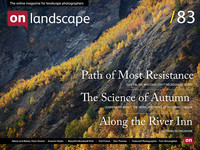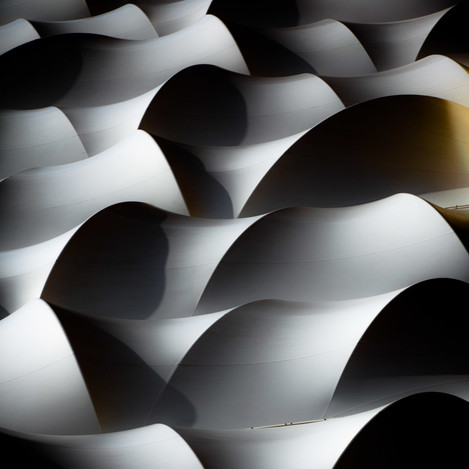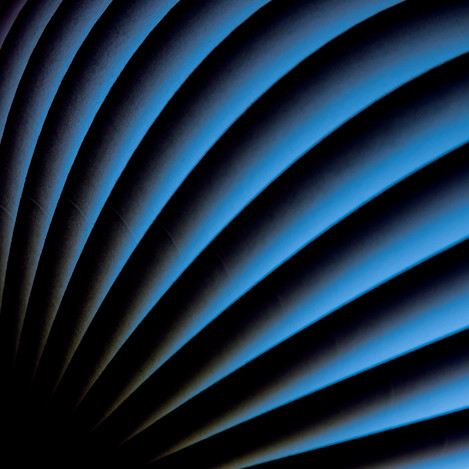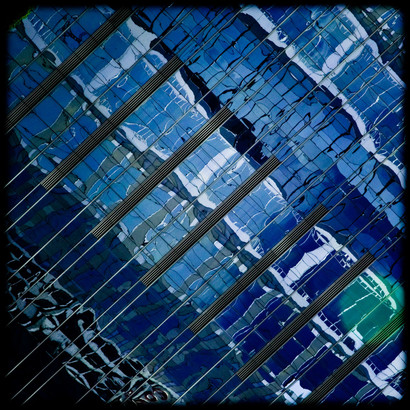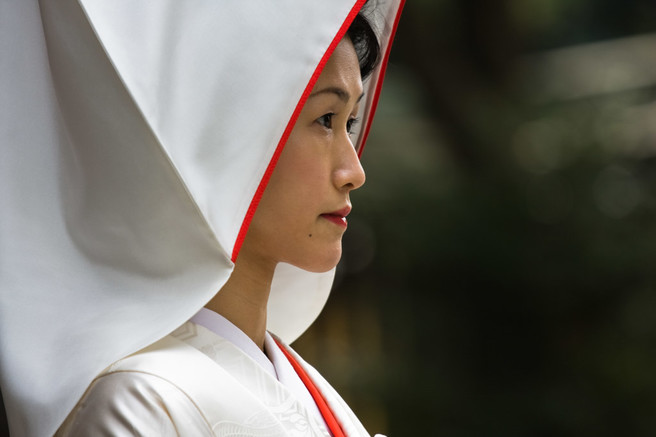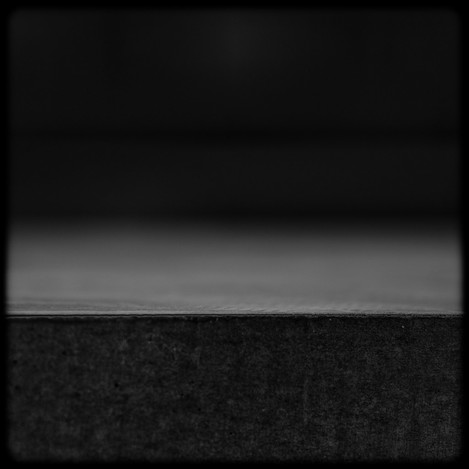FEATURED PHOTOGRAPHER

Michéla Griffith
In 2012 I paused by my local river and everything changed. I’ve moved away from what many expect photographs to be: my images deconstruct the literal and reimagine the subjective, reflecting the curiosity that water has inspired in my practice. Water has been my conduit: it has sharpened my vision, given me permission to experiment and continues to introduce me to new ways of seeing.
Tom McLaughlan: Finding Rhythm and Soul in the Urban
Our perceptions of landscape are largely romantic, derived from 18th and 19th century fashions for the “picturesque” and for improving upon nature, evidenced through the writings of the traveller, the brush of the painter and the estates of the landed gentry. Yet the majority live, work and play in an urban environment far removed from this ideal. Is it possible to find the natural within the architecture of city life? Look beyond the pattern and colour of Tom McLaughlan’s abstracted buildings and structures and you will find something organic. Many of his compositions contain echoes of natural shapes or landforms. He says that he is looking for the extraordinary amongst the ordinary. Has he found it?
Can you give us a little background on what your early interests were, what you studied and where this led?
Politics has always been a passion of mine. Back in the 80s, I studied Law and Politics at Oxford Poly, served on the Students Union for a couple of years and then moved into public affairs in the energy industry, leading to four years as a diplomat in Tokyo, a couple of years back in industry (working on EU issues in Brussels) and then to my current job at Accenture. I’ve been there for eight years and it’s the best job I’ve ever had. In effect, I get paid for one passion (politics) that helps fund the other. I am truly a very fortunate person.
When and where did your relationship with the camera start? You credit Flickr with having a key role in your development as a photographer?
I started to take pictures seriously about six years ago. For a while I’d had a Flickr account – we used it to share family snaps with relatives as none of them live close by – through which I was exposed to some great photography. Eventually I summoned up the courage to post a picture or two of my own and was pleasantly surprised that they got a positive reaction. Around the same time, I was in need of a hobby to balance the demands of work and so, before I knew it, I was enjoying the camaraderie of Flickr; meeting people who were happy to share their knowledge and help me on my way, several of whom have since become very special friends. For me Flickr and photography are synonymous and without one I’d never have discovered the other.
Tell me about why you love (landscape) photography?
I guess that depends on how the term is defined. If we’re talking about capturing scenes of nature, then it’s not something I seek out. For me, the most appealing landscapes are the detail of the urban variety – the landscapes we walk through every day and often don’t even notice.
There’s a sense with your photostream that with time and practice you’ve become….. more focussed? That initially lots of things caught your eye, but that now what you leave out is as important as what you leave in?
For sure! I started off shooting flowers not least because we live quite close to Wisley where there’s an enormous greenhouse so I could always go there whatever the weather. Shooting flowers introduced me to pursuing patterns and the way that creative use of the camera’s aperture could ‘ignite the imagination’. Looking back they were the elements I held on to – the things I now search out whatever I photograph. And leaving things out is something I was taught by a great designer friend of mine, John Spencer (founder of Off the top of my head and the guy who designed the Ministract logo). I can hear him imploring me to leave stuff out. “Less is more”. “You don’t need that – get rid”. “Less, Tom. Less!”
But this is all a journey… One of my favourite pieces of writing is Arni Minkkinen’s Helsinki Bus Station Theory (mine too – Michéla). Every now and then I’ll jump off the bus he describes and grab a cab back to the bus station for fear I’d caught the wrong one, but it’s happening less frequently these days as my confidence in the route grows.
Which photographers inspire you most? What books (if any) stimulated your interest in photography and who drove you forward, directly or indirectly, as you developed?
This is a dangerous question but I’ll offer a few names while noting that I’m inspired by many.
Gianni Galassi is a wonderful photographer – and now friend – from Rome. He’s an inspiration of fundamental importance and what’s more he’s enormously generous with his time, advice and encouragement. Two photographers whose images are at the other end of the ministract spectrum to Gianni’s are Chris Friel and Valda Bailey. Their work transports me to another place, sparking my imagination and leaving me with a general feeling of awe. Gianni, Chris and Valda take photographs that, one day, I’d like to be able to emulate. Jim Mortram, however, is an entirely different kettle of fish! Never in a month of Sundays could I take photographs like his but that’s not the point. With Jim, the inspiration I get is more about community and about using the camera to try and do some good. It’s about being honest to yourself as well as to your subject – whether it’s a person, a building or a view out to sea.
I have collected books in the same way that I’ve collected camera bags. The excess bags have all been sold but the books remain. To my shame, however, I’m not brilliant at reading them from cover to cover but one I did – several times, in fact – is Michael Freeman’s The Photographer’s Eye. The advice it provided, especially around composition, was great for me. Another I’ve started to read several times is Roland Barthes’ Camera Lucida but it’s a heavy read and so, shamefully, I’m still to complete its 115 or so pages. Its focus on the effect a photograph has on the viewer – not on the craft of the artist, the quality of their kit or indeed the subject they’re shooting – is why it’s important. For a while I’ve been fascinated by the concept of punctum, something I poorly describe as the often-unexpected element in a photograph that slaps you across the face. Osvaldo Pieroni, who I met on Flickr soon after I started photography, introduced me to it. Nobody but nobody has made a greater impression on me or inspired me more on my photography journey than Osvaldo. He took me under his wing (although he would never have thought of it like that) after I’d been taking pictures for just a few months and guided me along the way, with observations and questions that led to profound learnings. Osvaldo was stolen from this world last September, a victim of ALS/MND, and even though we’d only known each other for a few years I still feel both him and his wisdom pushing me on. Vola solo chi osa farlo - Only those who dare to, fly.
But ‘fine art photographers’ beware?
Gosh, you’ve got me going now and so I’d better stop before I annoy too many people. I hope folk will take this as being (relatively) light-hearted!
In most photographers lives there are 'epiphanic’ moments where things become clear, or new directions are formed. What were your two main moments and how did they change your photography?
The first – a photo of a Japanese bride at Tokyo’s Meiji Shrine, taken in February 2008 (https://www.flickr.com/photos/daruma/2272727405) – was the one that made me think that perhaps I could do something good with a camera and that photography should be my hobby. I can still remember how I felt when I saw it on the computer screen. Did I take that? It’s funny to think of it now but it really was a wonderful moment that’s changed my life.
This one (https://www.flickr.com/photos/daruma/3547957281) from the Holocaust Memorial in Berlin provides the second moment – it was one of the first pictures I took on the very first day that I met JiBBR. From that day I’ve used the camera to make friends, not pictures. Sure I take shots – I love taking shots! – but the friendship of people lasts long after the buzz of taking a photo has gone. That meeting had another effect too. From that short visit to the city of Berlin, I’ve realised that my favourite moments with a camera are out on the street. I’m a street photographer at heart but with buildings, not people, as my subject.
You say that you are looking for the extraordinary amongst the ordinary. Have you found it?
I like to try but the search will go on and on. It’s too much fun to stop just yet!
You’ve also said that “Ministract is for misfits”?
I mentioned before that for me Flickr and photography are synonymous. Flickr prompts you to tag shots and so I pretty soon got in to the habit but was often uncertain as to whether some of mine were abstract or minimal. They seemed to have elements of both but didn’t truly fit one or the other as far as I understood the definitions. But I was hooked to tagging and so I came up with ministract as a portmanteau word. If the word has a meaning, for me it goes beyond the misfits point and encourages me to search at the intersection of minimal and abstract. It can be fertile territory.
Do you think that your interest in simplicity / minimalism is a reaction to the complications of (business) life and language? (Tongue in cheek) Have you any plans to start a Plain (English) Photography campaign?
That’s an interesting question and to be honest it isn’t something I’ve considered. Perhaps it is. What I do know is that taking up photography was an attempt to create a degree of work-life balance. As for a Plain (English) Photography campaign… It certainly sounds interesting and whilst I doubt I’d have the time to start it please do count me in as a member.
Could you tell us a little about the cameras and lenses you typically take on a trip and how they affect your photography?
I’m trying not to talk about kit in an obsessive way so all I’ll say is that I’ve recently sold all my DSLR equipment and replaced it with a mirrorless camera. It’s a dream to be able to carry everything all day and not then have to spend a couple more recovering. The change has had an impact on my photography in that now, at last, I’m able to take my camera with me all the time as it fits comfortably into my workbag. And if I’m traveling the camera bag fits into my carry-on luggage along with a laptop and a few days’ worth of clothes.
It’s a square world? Compose in camera or crop?
Both. Compose in camera with cropping square in mind. And, yes, nearly always square images. It started by accident – I’d noticed that square images got more of the real estate on Flickr’s old design so I stuck with it. But pretty soon I found myself shooting with square in mind all the time. From time to time I’ll post non-square pictures but it’s the exception to the rule.
What sort of post processing do you undertake on your pictures? Give me an idea of your workflow.
Pretty basic usually – boost the contrast and colour saturation and crop square. In summary: take picture; import to Lightroom; use sliders; export as JPEG; and watch hard drive fill up with pictures that are never printed J
Do you get many of your pictures printed and, if at all, where/how do you get them printed?
See last answer! I’ve seen some printed – at work my boss took a liking to some of the pictures and had six printed for the office walls, and Burson-Marsteller hung a dozen or so at their London HQ as part of a redesign and made a very significant donation to the Helen Bamber Foundation, a human rights charity where I’m a trustee.
Tell me what your favourite two or three photographs are and a little bit about them.
It’s difficult to pick favourites as such so instead I’m going to select three that I like a lot but, more importantly, that are representative of my favourite themes. The first one is from my Buildings portfolio is of Santiago Calatrava’s railway station at Liége. It’s a truly fabulous structure with lines and curves to thrill anybody. Put a wide angle lens on your camera, hold it up above your head and click and I swear you’ll get a wonderful shot. One of the main attractions for me about Calatrava is that he combines two specialisms – architecture and engineering – and so is able to pull off risks that others can’t even contemplate. His buildings are temples to rhythm.
The next shot from my Italy portfolio combines two of my great loves – Italy and the fun of taking abstract photographs that hopefully surprise. This one is of two painted steel columns in a bar, flipped through 90 degrees, to create (in my mind at least) a ministract red seascape. I’ve taken several pictures of this style, all of them playing with the reflections you get in metal, but this is my favourite of the bunch.
The last one from my Schmocus portfolio reminds me of JiBBR. JiBBR is Jorg Kaempfer from Berlin, Barbara Kaubisch from Hannover, Barbara Stumm from Zurich, Rita Vita Finzi from Ferrara and me. We met through Flickr and then met in person for the first time as a group in Berlin, when this shot of colour swatches reflected in the back window of a mini was taken. The name comes from the first letters of our names but we were short of a vowel and since I was only with them for one day, I became interlude for the sake of the name! JiBBR has been a wonderful experience for me – we try and meet up a few times a year for long weekends in different cities around Europe. Starting as a group of people who shared a passion for photography, we very quickly became friends who happened to have cameras.
A few years back you set yourself 3 photographic goals. Two of these seem well in hand (getting your own website, following in Santiago Calatrava’s footsteps). How is the third - photograph a stranger with their permission and learn something about them - going?
Errr… Next question?
What are you most proud of in your photography?
I think that has to be raising money for the Helen Bamber Foundation and a number of ALS/MND charities, including AISLA in Italy. It’s nice to be able to give something back through my work.
What sorts of things do you think might challenge you in the future or do you have any photographs or styles that you want to investigate? Where do you see your photography going in terms of subject and style?
I’ve long wanted to be able to use multi exposure techniques like Chris Friel or Valda Bailey so one day I’d love to learn about it but I’ll never have their eye. Many times I’ll just sit and enjoy their shots. Other than that I’m content with what I’m doing now – in terms of style – but I do want to keep on improving. I often say I’d love to be able to take a sabbatical from work and travel the world for a few months, taking photographs of Santiago Calatrava’s structures but who knows if that will ever happen?
You seem clear that you don’t, for now at least, want to try to monetise your images. You’ve produced a couple of books via Blurb with sales of these raising funds for good causes. Is this a direction that you’d like to explore further?
Yes, for sure. I’ve often wondered whether it would be possible or indeed of any use for a group of photographers to pool their work, making it available for charities to use. Maybe just as stock pictures for use on their website or in publications or even for something more adventurous. I don’t know. What I do know, however, is that my images aren’t ever going to change the world or ‘make a difference’ – that’s the bailiwick of wonderful documentary photographers like Jim Mortram. But if I can use mine in some way that would allow others to make a difference then that would be good.
And one day I’d love to be invited to have an exhibition of my photographs. Yes, I know it’s a bit of an ego trip (I’d be a fibber to deny it) but the idea of a group of people enjoying my work and perhaps even buying one or two with HBF or AISLA getting a bit of money is one I’d really like to see realised one day. Apart from announcing my interest though I have no idea how to make it come to fruition!
If you were told you couldn’t do anything photography related for a week, what would you end up doing (i.e. Do you have a hobby other than photography.)
Photography is the one and only! But I do have a family and friends and a day job so I’m never short of things to do. Plus, I’d love to spend more time helping the Helen Bamber Foundation.
Which photographer(s) do you think we should interview for a future feature?
Rita Vita Finzi is a great friend and a wonderful photographer from Ferrara in Italy. I think you’d enjoy her work and insights.
Thank you Tom – and congratulations for being (I think) the first interviewee to list politics and photography as twin passions. Tom’s website - including his blog - can be found at http://ministract.com/. During the last 12 months he’s been posting new images within the blog, but each gallery contains a link back to his Flickr photostream which includes additional or earlier images.

